The world of kitchen appliances has been revolutionized by the advent of contact grills, offering home chefs a convenient and efficient way to achieve restaurant-quality searing. These compact, versatile cooking devices have become a staple in many households, and as the demand for healthier cooking options grows, so does the importance of contact grill manufacturers in shaping the global kitchen appliance industry. In this segment, we delve into the factors that drive consumer preferences, the competitive landscape of major players, the innovative features that set them apart, the regulatory environment they navigate, the distribution channels they employ, and the future outlook for this dynamic market.
Introduction to Contact Grill Market in the EU and US
The contact grill market in the EU and US has witnessed a remarkable evolution, becoming a cornerstone of modern culinary trends. As a staple in both professional kitchens and homes, these versatile cooking appliances have garnered significant attention. This market overview delves into the intricacies of the contact grill industry, highlighting its growth trajectory, key players, and consumer dynamics in these two prominent regions.
The European Union (EU) has long been a hub for innovation in kitchen appliances, and the contact grill market is no exception. With a diverse consumer base that values health, convenience, and culinary versatility, the EU has seen a surge in demand for contact grills. These appliances offer a unique combination of even heat distribution and quick cooking times, making them ideal for searing meats and vegetables with minimal oil.
In the United States, the contact grill market has experienced steady growth, driven by a health-conscious consumer demographic and the increasing popularity of outdoor cooking. Americans have embraced the contact grill as a convenient alternative to traditional grilling methods, allowing for consistent results even in the confines of a kitchen setting.
The rise of contact grills in both the EU and US can be attributed to several factors. Firstly, the convenience they offer is unparalleled. With their compact size and ease of use, contact grills have become a favorite among busy professionals and families. Secondly, the health benefits of grilling with less oil have made these appliances increasingly appealing. Consumers are drawn to the idea of preparing delicious meals that are both flavorful and nutritious.
In the EU, the market is segmented by various types of contact grills, including countertop, portable, and built-in models. The countertop segment dominates the market, thanks to its affordability and ease of use. However, the built-in segment is expected to grow at a significant pace, as consumers seek to integrate their appliances seamlessly into their kitchen environments.
Similarly, in the US, the market is witnessing a shift towards higher-end models that offer advanced features such as adjustable heat settings, non-stick surfaces, and programmable cooking times. This trend reflects the evolving preferences of consumers who are willing to invest in premium products for better performance and durability.
When it comes to key players, the contact grill market in both the EU and US is characterized by a competitive landscape. Brands such as George Foreman, Breville, and Cuisinart have established themselves as market leaders, offering a wide range of contact grill options to cater to different consumer needs. These companies have leveraged their brand reputation and innovation to capture a significant share of the market.
Innovation has been a driving force behind the growth of the contact grill market. Manufacturers are constantly pushing the boundaries of what these appliances can do, introducing features like infrared heating, which provides a more intense and even cooking experience. Additionally, smart technology has become a key differentiator, with some models now offering connectivity to mobile devices for remote temperature control and recipe guidance.
Regulatory standards play a crucial role in the contact grill market, ensuring the safety and quality of these products. Both the EU and US have stringent regulations governing the manufacturing and sale of kitchen appliances, including safety certifications and energy efficiency requirements. Compliance with these standards is essential for manufacturers looking to enter or expand their presence in these markets.
Distribution channels have also evolved to accommodate the demand for contact grills. Online sales have seen a significant uptick, with many consumers opting to purchase these appliances through e-commerce platforms. However, traditional retail channels remain strong, with brick-and-mortar stores offering the opportunity for hands-on demonstrations and customer support.
Looking ahead, the contact grill market in the EU and US is poised for continued growth. As consumer awareness of health and convenience continues to rise, the demand for these versatile appliances is expected to remain robust. Manufacturers that can innovate and adapt to changing consumer preferences will be well-positioned to capture a larger share of this dynamic market.
In conclusion, the contact grill market in the EU and US has become a testament to the power of innovation and consumer demand. As the industry continues to evolve, it will be interesting to see how manufacturers navigate the challenges and opportunities that lie ahead.

Understanding the Contact Grill: What It Is and How It Works
Contact grills, often mistakenly referred to as George Foreman grills, have become a staple in many kitchens around the world. These compact cooking appliances are designed to cook food by pressing it between two heating plates, ensuring even cooking and a distinctive grill mark. Let’s delve into what makes a contact grill unique and how it operates.
The core of a contact grill is its flat, heating plates that are usually made of cast aluminum or stainless steel. These plates are designed to be parallel and come together when the grill is in use, forming a tight seal around the food. This sealing action is crucial, as it not only keeps the heat trapped but also allows for the smoking of the food, adding a smoky flavor that is characteristic of grilled dishes.
When the grill is turned on, the heating elements beneath the plates begin to warm up. The heat is distributed evenly across the plates due to their flat and wide surfaces, which are ideal for cooking meats, vegetables, and sandwiches. The temperature control feature on most contact grills allows users to adjust the heat to suit their desired level of doneness, from rare to well-done.
One of the key advantages of a contact grill is its ability to cook food with minimal oil or fat. The seal created by the plates ensures that any fats and oils released from the food are retained, making the cooking process healthier and reducing the need for additional fats. This feature is particularly appealing to health-conscious consumers and those looking to reduce their calorie intake.
The cooking process itself is quite simple. You place your food on the grill, close the lid, and let the heat do its work. The even distribution of heat means that the food cooks uniformly, with no cold or hot spots. This is especially beneficial for thicker cuts of meat, as it ensures that the inside is fully cooked while the outside is beautifully seared.
The contact grill’s design also allows for different cooking techniques. For instance, the grill can be used to cook a steak by pressing it down firmly and cooking it at a high temperature for a short period. Alternatively, you can use the grill to cook a sandwich by placing bread on the plates, adding fillings, and pressing down until the bread is toasted and the fillings are heated through.
Another interesting aspect of contact grills is their versatility. Many models come with additional features that allow for grilling, pan-frying, and even baking. Some grills have adjustable plates that can be raised or lowered to accommodate different types of food, while others have removable plates that can be used as a griddle or a pan.
The technology behind contact grills has also evolved over the years. Modern grills often come with non-stick surfaces that make cleaning easier and prevent food from sticking to the plates. Some models also include features like adjustable temperature settings, LED lights for better visibility, and even digital timers for precise cooking times.
In terms of maintenance, contact grills are relatively easy to clean. The sealed design means that food drippings are less likely to fall between the plates, and most grills come with a drip tray to catch any excess grease. After cooking, it’s simply a matter of wiping down the plates and the exterior of the grill.
In conclusion, the contact grill is a versatile and efficient cooking appliance that offers a healthier alternative to traditional grilling methods. Its ability to cook food evenly, retain flavors, and minimize the use of oil makes it a favorite among many home cooks. Whether you’re grilling a steak, making a sandwich, or even baking a cake, a contact grill can help you achieve delicious results with ease.
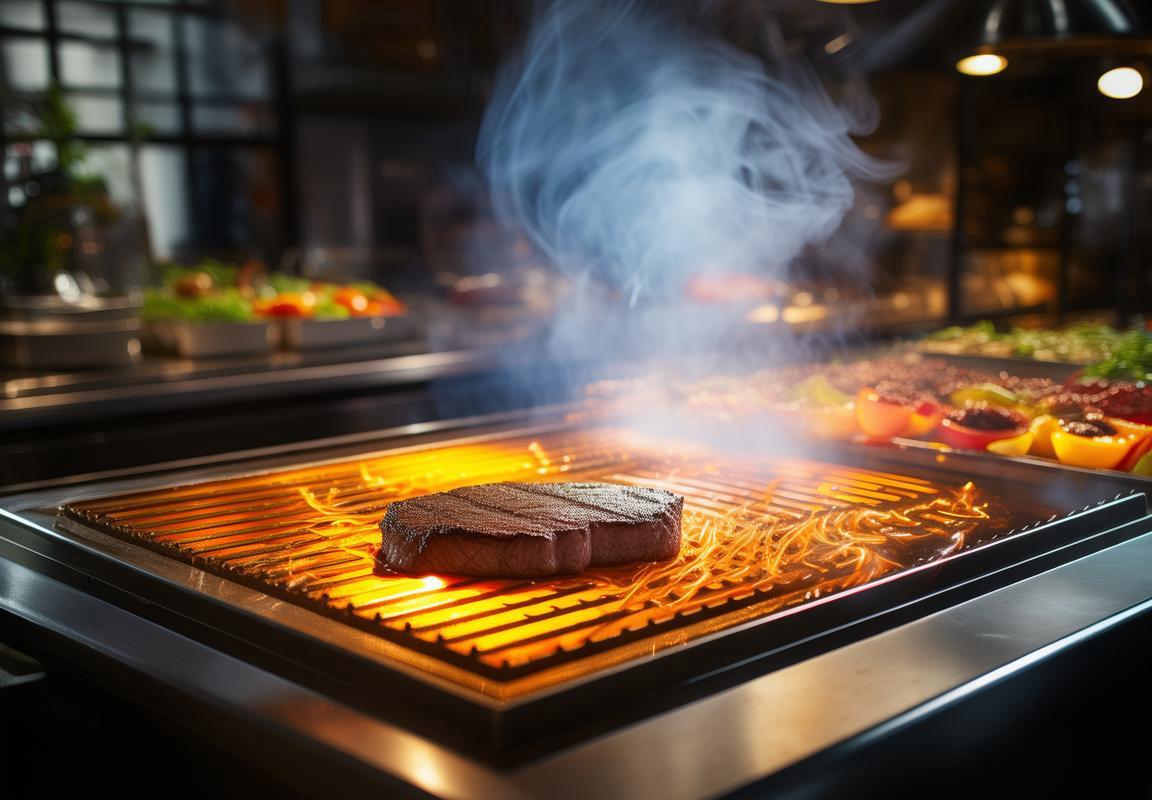
Market Dynamics: Growth Trends and Drivers
The contact grill market has been witnessing a surge in popularity, driven by several dynamic factors that are reshaping the landscape. One of the primary trends is the increasing health consciousness among consumers, which has sparked a demand for cooking methods that minimize oil usage. This shift towards healthier eating habits is a significant driver of growth in the contact grill market.
Consumer preference for convenience is another major force. The modern lifestyle often leaves little time for cooking, and contact grills offer a quick and efficient way to prepare meals. These grills are compact, easy to use, and require minimal cleanup, making them a preferred choice for busy individuals and families.
The rise of outdoor cooking and social gatherings has also bolstered the contact grill market. As people seek new ways to entertain outdoors, the versatility of contact grills, which can be used for a variety of recipes from steaks to vegetables, has made them a staple in many outdoor kitchens. This trend is particularly strong in the US, where grilling is deeply ingrained in the culture.
Technology advancements have played a pivotal role in market dynamics. Modern contact grills come with features like non-stick surfaces, adjustable temperature controls, and digital displays, making them more user-friendly and precise. These technological improvements have not only enhanced the cooking experience but have also widened the appeal of contact grills to a broader audience.
The integration of smart technology is another trend that cannot be overlooked. With the advent of smart contact grills, users can now control their grills remotely via smartphones or tablets. This level of connectivity and convenience is a testament to the rapid pace of technological innovation and its influence on consumer preferences.
In terms of regional dynamics, the EU and US markets are leading the charge in contact grill adoption. Europe, with its diverse culinary traditions, has seen a rise in gourmet cooking, which has fueled the demand for high-quality kitchen appliances, including contact grills. Similarly, the US market has been a hotbed for innovation in kitchen appliances, with consumers eager to embrace the latest trends.
The growth of the contact grill market is also being driven by demographic changes. As the population ages, there is an increasing need for appliances that are easy to use and maintain. Contact grills fit this bill perfectly, as they require minimal effort to operate and clean.
Furthermore, the rise of health-focused fast-casual dining has had a spill-over effect on the contact grill market. As consumers look for ways to enjoy restaurant-quality meals at home, contact grills offer a solution that combines speed, convenience, and health benefits.
Economic factors also play a role in market dynamics. As incomes rise and disposable income increases, consumers are more willing to invest in higher-end kitchen appliances that enhance their cooking experience. Contact grills, with their ability to deliver professional-grade results, have become a sought-after item for many consumers.
The sustainability movement is another driver of growth. As consumers become more environmentally conscious, they are increasingly looking for appliances that are energy-efficient and have a smaller carbon footprint. Contact grills, which use less oil and can be powered by electricity or gas, align with these sustainability goals.
Finally, the contact grill market is being influenced by the globalization of food trends. As people travel more and explore different cuisines, they bring back a desire to recreate these flavors at home. Contact grills offer a versatile platform for experimenting with various recipes and techniques, making them a key player in the global kitchen appliance industry.

Consumer Preferences: Key Factors Influencing Purchase Decisions
In the realm of kitchen appliances, consumer preferences play a pivotal role in shaping the market landscape. Understanding these preferences is crucial for contact grill manufacturers looking to capture the attention and wallets of consumers. Here’s a breakdown of the key factors that influence purchase decisions when it comes to contact grills:
Grilling Preferences and Cooking TechniquesConsumers who are passionate about grilling often seek contact grills that offer versatility in cooking techniques. Preferences may lean towards models that can sear, bake, or even smoke food, reflecting a desire for a multifunctional appliance that can handle various culinary tasks with ease.
Ease of Use and CleanupThe convenience of use is a significant factor for many consumers. They look for contact grills with intuitive interfaces, easy-to-clean surfaces, and features that simplify the cooking process. The appeal of a grill that requires minimal effort to clean up after use can be a strong selling point, especially for busy households or individuals who prefer quick and straightforward meal prep.
Design and AestheticsThe aesthetic appeal of a contact grill is also a key consideration. Modern consumers are drawn to sleek, modern designs that complement their kitchen decor. The material, color, and overall look of the grill can influence whether it is perceived as a desirable addition to the kitchen.
Safety and Health ConcernsWith the rising awareness of health and wellness, consumers are increasingly gravitating towards cooking methods that minimize the addition of fats and oils. Contact grills, which are known for their ability to cook food with less fat, align with these health-conscious preferences. Additionally, safety features like non-slip surfaces, cool-touch handles, and safety locks are crucial for peace of mind.
Brand Reputation and Customer ReviewsThe reputation of the brand and the experiences of previous customers can significantly impact purchasing decisions. Consumers often rely on reviews and testimonials to gauge the quality and reliability of a product. A strong brand with a history of producing high-quality kitchen appliances is likely to attract more consumers, as is a grill with positive feedback from other users.
Price and Value for MoneyWhile not the only consideration, price is a critical factor for many consumers. They seek the best value for their money, balancing quality with affordability. Contact grill manufacturers that offer competitive pricing without compromising on features and durability are more likely to attract budget-conscious buyers.
Energy Efficiency and Environmental ConsiderationsIn recent years, energy efficiency has become a growing concern for consumers. They are more likely to choose a contact grill that is energy-efficient, not just for cost savings but also for environmental reasons. A grill that consumes less energy and has a smaller carbon footprint may appeal to eco-conscious consumers.
Features and InnovationsConsumers are often interested in the latest features and innovations that enhance the cooking experience. This could include advanced temperature control, non-stick surfaces, and additional accessories like drip trays or cooking plates that expand the grill’s functionality. The presence of such features can make a contact grill stand out in a crowded market.
Cultural Trends and Seasonal DemandCultural preferences and seasonal trends can also influence consumer purchasing decisions. For instance, during grilling seasons or when there’s a cultural celebration that involves outdoor cooking, the demand for contact grills may spike. Manufacturers who can tap into these trends and offer products that cater to them may see increased sales.
In conclusion, consumer preferences in the contact grill market are multifaceted, encompassing a wide range of factors from cooking capabilities and safety features to design and price. Recognizing and addressing these preferences is essential for manufacturers aiming to succeed in this dynamic and competitive sector.

Competitive Landscape: Major Contact Grill Manufacturers
In the bustling world of contact grill manufacturing, several key players have emerged as leaders, each bringing their unique strengths and innovations to the market. Here’s a glimpse into the competitive landscape and the major manufacturers that are shaping the industry.
-
Breville: Renowned for their high-quality kitchen appliances, Breville has established itself as a top contender in the contact grill market. Their grills are celebrated for their sleek designs and advanced features, such as adjustable temperature controls and non-stick surfaces that ensure even cooking and easy cleanup.
-
George Foreman: A household name in the grill industry, George Foreman has been a dominant force in contact grill manufacturing for decades. Their grills are known for their heavy-duty construction and ability to produce juicy, perfectly grilled meats. The brand’s commitment to health and convenience has resonated with consumers, making George Foreman a staple in many kitchens.
-
Hamilton Beach: This versatile brand offers a range of contact grills that cater to various cooking needs. Their grills are often praised for their affordability and ease of use, making them a popular choice for both casual and frequent grillers. Hamilton Beach’s focus on providing value has helped them carve out a niche in the competitive market.
-
Cuisinart: Cuisinart is a well-respected name in kitchen appliances, and their contact grills are no exception. Known for their durable construction and innovative features, such as flip-top lids and temperature control settings, Cuisinart grills offer a premium experience without the premium price tag. Their commitment to quality has helped them maintain a strong presence in the market.
-
Calphalon: A brand associated with high-quality cookware, Calphalon has extended its reach into the contact grill market with impressive results. Their grills are designed with professional-grade materials and technology, ensuring long-lasting performance and exceptional cooking results. Calphalon’s reputation for excellence has drawn many consumers to their contact grill offerings.
-
Chef’s Choice: This brand has made a name for itself by offering a variety of kitchen gadgets, including contact grills. Chef’s Choice grills are known for their affordability and practicality, making them a go-to choice for those who want a reliable grill without breaking the bank. Their commitment to providing value-driven products has helped them gain a solid customer base.
-
DASH: As a newer entrant in the market, DASH has quickly gained traction with their compact and efficient contact grills. These grills are perfect for small spaces or those who prefer quick and easy cooking solutions. DASH’s focus on modern design and functionality has made them a favorite among young consumers and those looking for minimalist kitchen appliances.
-
Sunbeam: A brand known for its home appliances, Sunbeam offers a range of contact grills that are both affordable and functional. Their grills are often equipped with features like variable temperature settings and removable cooking surfaces, making them versatile options for a variety of cooking styles. Sunbeam’s reputation for reliable and accessible products has contributed to their success in the market.
-
Black & Decker: This brand is recognized for its durability and affordability, and their contact grills are no different. Black & Decker grills are designed to withstand daily use and are often equipped with features that make grilling simple and enjoyable. Their commitment to providing practical solutions at a reasonable price has helped them maintain a loyal customer base.
-
Cuisinpro: A division of Cuisinart, Cuisinpro brings a blend of quality and innovation to the contact grill market. Their grills are designed with a focus on both performance and convenience, offering features like reversible cooking surfaces and adjustable temperature controls. Cuisinpro’s offerings have helped them stand out in a crowded market.
The competitive landscape of contact grill manufacturing is diverse and dynamic, with each major manufacturer bringing something unique to the table. From premium brands like Calphalon to budget-friendly options like Hamilton Beach, consumers have a wide array of choices that cater to their individual needs and preferences. As the market continues to evolve, these manufacturers are poised to innovate and adapt, ensuring that they remain at the forefront of this growing industry.
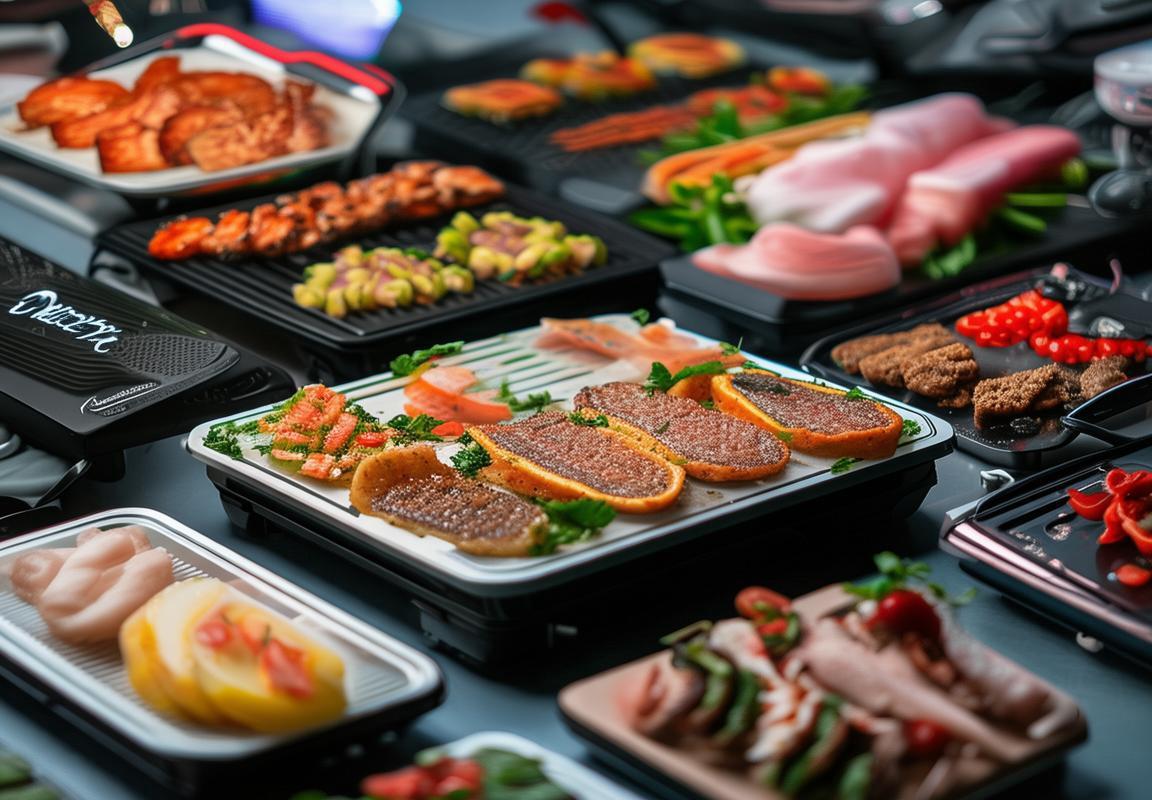
Innovation in Contact Grills: Features and Technologies
Contact grills, often referred to as flat grills or countertop grills, have seen a surge in popularity due to their convenience and versatility. These compact appliances are designed to cook food with even heat distribution, mimicking the flavor and texture of outdoor grilling. Let’s delve into the latest features and technologies that are shaping the innovation in contact grills.
Grill Surface InnovationsThe heart of a contact grill is its cooking surface. Modern grills often feature non-stick coatings that make cleaning a breeze and prevent food from sticking. Some models have advanced surfaces with grooves or grids that enhance the grill marks and help to lock in the flavors. Additionally, there are grills with ceramic coatings that are durable and offer excellent heat retention.
Smart Technology IntegrationSmart technology has found its way into contact grills, making them more user-friendly and efficient. Many models now come with digital temperature controls, allowing users to set precise cooking temperatures. Some even have built-in timers and alarms to notify when the food is ready. The integration of Bluetooth or Wi-Fi capabilities enables remote control and monitoring through smartphone apps, which can be incredibly convenient for busy cooks.
Variable Heat SettingsA key feature that has become increasingly popular in contact grills is the ability to adjust heat settings. Users can now choose from a range of temperatures to suit different types of food and cooking methods. This versatility means that contact grills can be used for searing steaks, grilling vegetables, or even baking bread, all on the same appliance.
Convection CookingSome contact grills have incorporated convection heating elements, which help to circulate hot air around the food, resulting in a more even cook. This technology is especially beneficial for cooking larger cuts of meat or when you want to bake something like a cake or a casserole directly on the grill surface.
Built-In Sear StationsFor those who love the char and flavor of a grill, some contact grills now come with built-in sear stations. These stations provide a high-heat zone for searing meats, giving the food that classic grilled crust. It’s a feature that combines the convenience of a contact grill with the authenticity of a traditional grill.
Induction Cooking TechnologyInduction cooking has started to make its way into contact grills, offering several advantages over traditional electric heating elements. Induction cooktops heat the pot or grill surface directly, which means the heat is more efficient and faster to adjust. This technology is not only energy-saving but also provides a safer cooking environment, as there is no exposed heating element.
Safety FeaturesSafety is a top priority in kitchen appliances, and contact grills are no exception. Modern models often include features like cool-touch handles and surfaces, child safety locks, and automatic shut-off functions that activate after a period of inactivity. These features help prevent accidents and ensure a safer cooking experience.
Cooking Plates and InsertsContact grills are not just for grilling; they can also be used for a variety of cooking methods. Many come with interchangeable cooking plates and inserts that allow for different types of cooking, such as pan-frying, sautéing, or even serving as a grill press. This versatility makes a contact grill a valuable addition to any kitchen.
Energy EfficiencyEnergy efficiency is a significant concern for many consumers. Contact grills that use induction technology or have advanced heat control systems are more energy-efficient than older models. They heat up faster, maintain consistent temperatures, and reduce energy consumption, making them a more sustainable choice.
In conclusion, the innovation in contact grills is driven by a desire for convenience, versatility, and safety. As technology continues to advance, we can expect to see even more features and technologies that make these countertop appliances an indispensable part of modern kitchens.
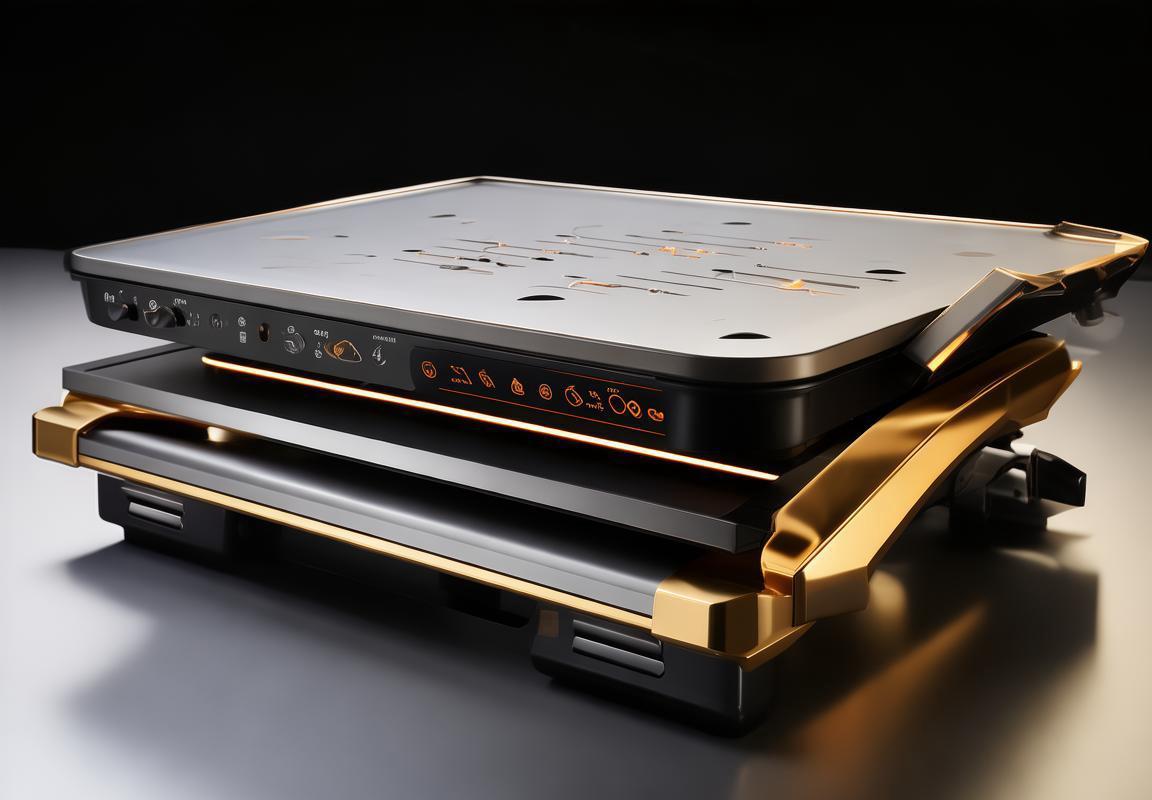
Regulatory Environment and Safety Standards
In the ever-evolving landscape of kitchen appliances, contact grills have seen a surge in popularity, not only for their convenience but also for the quality of the food they produce. Ensuring the safety and compliance of these appliances is crucial, and the regulatory environment plays a pivotal role in shaping the industry. Here’s a delve into the regulatory environment and safety standards surrounding contact grills.
Manufacturers must adhere to a set of stringent regulations that dictate the design, construction, and safety features of contact grills. One of the most significant regulatory frameworks is the International Electrotechnical Commission (IEC) standards, which set global guidelines for electrical appliances. These standards cover aspects such as electrical safety, fire protection, and the prevention of electric shock.
Fire safety is a paramount concern when it comes to cooking appliances, and contact grills are no exception. The Underwriters Laboratories (UL) and the Canadian Standards Association (CSA) provide certifications that ensure a product meets specific fire safety requirements. This includes materials used in the construction of the grill that are flame-resistant or non-combustible, as well as the presence of adequate fire extinguishing mechanisms.
Energy efficiency is another key area where regulations have a significant impact. In many regions, there are strict energy consumption standards that appliances must meet. Contact grills, being electrical appliances, must not only be safe but also energy-efficient. This often involves the use of advanced heating elements that provide even heat distribution while minimizing energy usage.
Safety standards also encompass the mechanical aspects of contact grills. The American National Standards Institute (ANSI) and the European Committee for Electrotechnical Standardization (CENELEC) provide guidelines for the mechanical stability, durability, and ease of use of kitchen appliances. These standards ensure that the grill’s components are robust and that the appliance can withstand regular use without compromising user safety.
Another critical aspect is the material used in the grill’s construction. Materials such as stainless steel are preferred due to their non-reactive nature, which means they do not impart flavors or odors into the food. Moreover, these materials are durable and easy to clean, which is essential for maintaining both food safety and appliance longevity.
Electromagnetic radiation (EMR) is also a concern in the context of cooking appliances. High levels of EMR can potentially cause health issues. To address this, manufacturers must comply with EMF (Electromagnetic Fields) exposure limits, as set by the International Commission on Non-Ionizing Radiation Protection (ICNIRP). These limits ensure that the exposure to EMR from a contact grill does not exceed safe levels.
Additionally, there are regulations regarding the labeling of products. Contact grills must include clear and accurate information about their features, care instructions, and safety warnings. This helps consumers understand how to use the grill properly and safely.
In recent years, there has been an increased focus on environmental regulations, particularly regarding the disposal of kitchen appliances at the end of their life cycle. Many countries have introduced regulations that require manufacturers to ensure their products are recyclable or to provide take-back programs for the collection and recycling of old appliances.
Safety standards also extend to the handling of contact grills. There are guidelines for the design of controls and interfaces, ensuring that they are user-friendly and easy to understand. This is particularly important for individuals who may be less familiar with the technology or for those with disabilities.
Furthermore, there are health and hygiene regulations that govern the use of contact grills in commercial settings, such as restaurants and catering businesses. These regulations are designed to prevent the spread of foodborne illnesses and ensure that the equipment is regularly cleaned and sanitized.
The regulatory environment surrounding contact grills is complex, encompassing a wide range of safety, health, and environmental concerns. Manufacturers must navigate this landscape carefully, ensuring that their products not only meet but exceed the required standards. This not only protects consumers but also upholds the reputation and trustworthiness of the brand. By doing so, they contribute to the overall advancement and sustainability of the kitchen appliance industry.
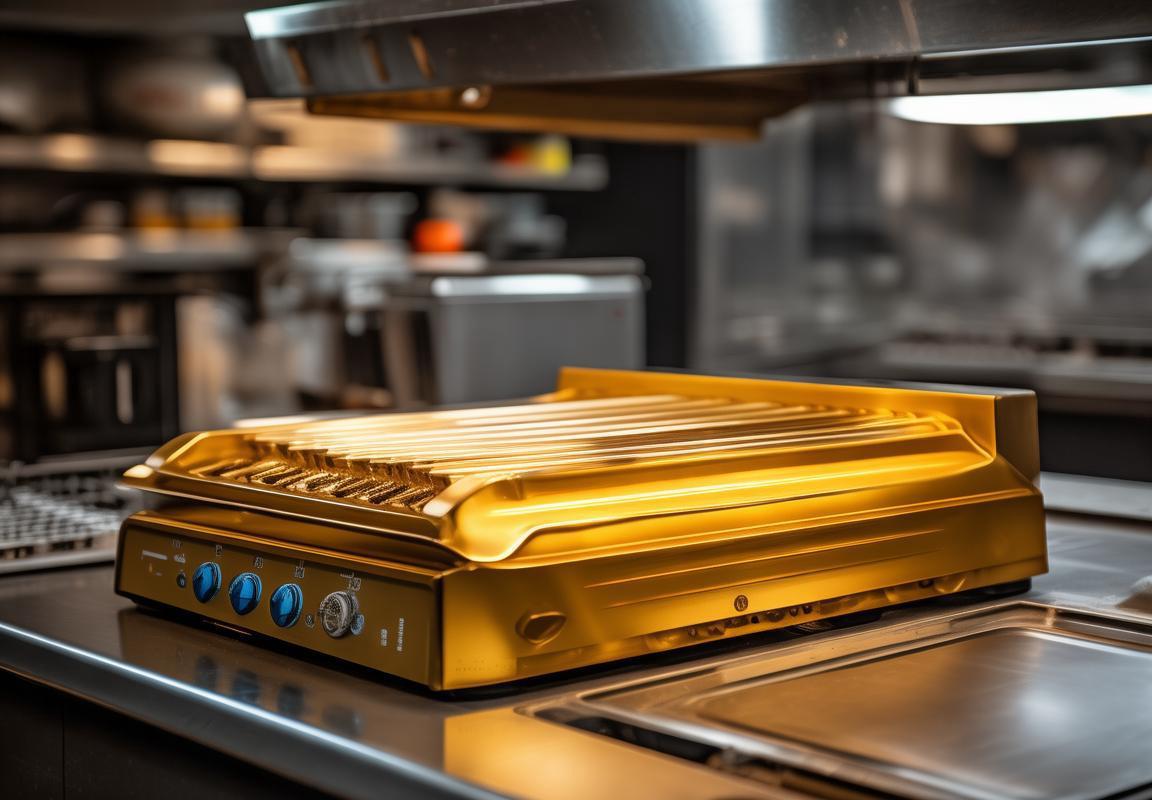
Distribution Channels: How Contact Grills Reach Consumers
In the bustling marketplace of kitchen appliances, contact grills have carved out a niche for themselves as a convenient and efficient cooking method. The journey from the manufacturing floor to the consumer’s kitchen is a complex one, involving various distribution channels that ensure these grills reach their intended audience effectively. Let’s delve into the different pathways that contact grills take to become a staple in households across the globe.
Retail Stores and SupermarketsRetail stores and supermarkets are the traditional gateways for many consumers to discover and purchase contact grills. These physical locations offer the advantage of hands-on experience, allowing customers to feel the weight, examine the features, and even try out the grill before making a purchase. Brands often partner with these outlets to showcase their latest models and provide demonstrations to highlight the benefits of their products.
Online MarketplacesThe rise of e-commerce has significantly expanded the reach of contact grill manufacturers. Online marketplaces like Amazon, eBay, and Alibaba have become go-to destinations for consumers seeking convenience and variety. These platforms offer a vast selection of grills from various brands, allowing customers to compare prices, read reviews, and make informed decisions from the comfort of their homes. The ease of online shopping has also made it possible for smaller manufacturers to compete on a global scale.
Specialty Kitchen StoresSpecialty kitchen stores cater to consumers who are passionate about cooking and are willing to invest in high-quality appliances. These stores often carry a curated selection of contact grills, focusing on brands known for their durability and innovation. The knowledgeable staff in these stores can provide personalized advice and answer specific questions about the grills, which can be particularly appealing to culinary enthusiasts.
Department StoresDepartment stores have long been a hub for a wide range of products, including kitchen appliances. They offer a one-stop shopping experience, where customers can find not only contact grills but also other cooking utensils and kitchenware. The department store’s reputation for quality and customer service can lend an air of credibility to the contact grill brands they carry.
Home Improvement CentersHome improvement centers, such as Home Depot and Lowe’s, are another avenue for contact grill distribution. These stores often have a dedicated section for kitchen appliances, where customers can find a variety of grills suited for different budgets and needs. The presence of these stores in many communities ensures that contact grills are accessible to a broad demographic.
Direct-to-Consumer (DTC) SalesSome contact grill manufacturers have chosen to forgo traditional retail channels and sell directly to consumers. This direct-to-consumer approach allows brands to maintain tighter control over their product presentation and customer experience. By eliminating the middleman, manufacturers can often offer competitive pricing and provide a more personalized shopping experience, including detailed product information and customer support.
Wholesale and Distribution NetworksFor larger brands, establishing a robust wholesale and distribution network is crucial. These networks ensure that contact grills are available in a wide range of retail locations, both locally and internationally. Distributors play a key role in managing inventory, coordinating deliveries, and sometimes even providing after-sales service, which can be particularly important for complex kitchen appliances like contact grills.
Specialty Events and Trade ShowsSpecialty events and trade shows can be a goldmine for contact grill manufacturers looking to reach a targeted audience. These events bring together industry professionals, culinary enthusiasts, and the general public, providing an opportunity to showcase the latest grill models and engage with potential customers. Manufacturers often use these occasions to launch new products and gather valuable feedback.
Collaborations with Influencers and ChefsInfluencers and chefs have become powerful allies in the marketing of contact grills. By collaborating with these individuals, manufacturers can leverage their credibility and reach to promote their products. Influencers often share their experiences with different grills, providing real-life testimonials that can sway consumer purchasing decisions.
Subscription ServicesSubscription services have gained popularity in various industries, and the kitchen appliance sector is no exception. Some contact grill manufacturers have started offering subscription models, where customers receive regular updates on new grill releases and can opt to receive their preferred model directly to their doorstep. This approach can create a loyal customer base and ensure a steady revenue stream for the manufacturer.
In conclusion, the distribution of contact grills is a multifaceted process that involves a mix of traditional and innovative approaches. From retail stores to online marketplaces, and from direct sales to collaborations with influencers, manufacturers have a variety of channels at their disposal to ensure their products reach consumers effectively. The key is to understand the target audience and tailor the distribution strategy to meet their preferences and needs.
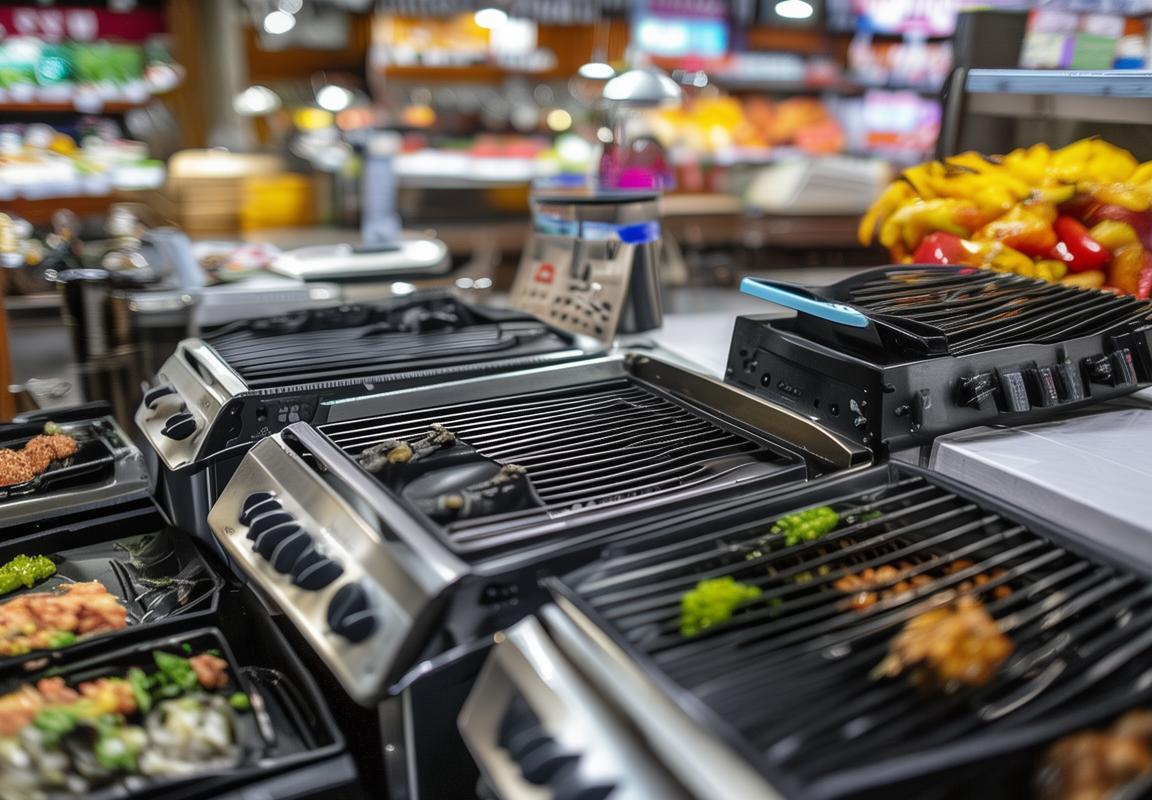
Future Outlook: Predictions and Opportunities
The contact grill market is poised for significant growth, driven by a variety of factors that are reshaping consumer preferences and creating new opportunities for manufacturers. From the rise of health-conscious consumers to technological advancements, several key trends are shaping the future of this niche within the kitchen appliance industry.
Health and Wellness TrendsConsumers are increasingly aware of the health benefits of grilling over traditional cooking methods like frying. This shift towards healthier cooking options is boosting the demand for contact grills, which are often perceived as a healthier alternative due to their ability to cook with less oil. The growing preference for lean proteins and reduced fat content in meals is directly influencing the popularity of contact grills.
Technological IntegrationSmart kitchen appliances are becoming more common, and contact grills are not immune to this trend. New models are incorporating smart features such as temperature control, Bluetooth connectivity, and even cooking apps that provide users with recipes and cooking times. These technological integrations are enhancing the user experience and making contact grills more appealing to tech-savvy consumers.
Sustainability FocusAs environmental concerns grow, consumers are looking for appliances that are not only functional but also eco-friendly. Contact grill manufacturers are responding by producing grills made from sustainable materials, offering energy-efficient models, and even considering the end-of-life recycling of their products. This focus on sustainability is expected to become a significant differentiator in the market.
Culinary ExplorationThe variety of foods that can be prepared on a contact grill is expanding the appeal of these appliances. From gourmet steaks to delicate seafood, the versatility of contact grills is attracting a broader range of consumers. The ability to achieve a perfect sear while maintaining the moisture of the food is a key feature that is driving interest among culinary enthusiasts.
E-commerce GrowthThe rise of e-commerce has had a profound impact on the appliance market, and contact grills are no exception. Online sales platforms are providing manufacturers with direct-to-consumer channels that can reduce costs and increase convenience for buyers. This trend is likely to continue as more consumers turn to the internet for their shopping needs.
Urbanization and Compact LivingAs urbanization increases, many consumers are living in smaller spaces with limited kitchen amenities. Contact grills offer a space-saving solution that can be easily stored and used on countertops or tables. This appeal to compact living is expected to grow as cities continue to expand and housing becomes more scarce.
Globalization and Cultural FusionThe globalization of cuisine has opened up new markets for contact grills. As different culinary traditions blend, there is a growing interest in international flavors, which can be replicated using these versatile cooking appliances. This cultural exchange is creating opportunities for manufacturers to cater to diverse consumer preferences.
Marketing StrategiesManufacturers are investing in marketing strategies that highlight the unique selling points of contact grills, such as ease of use, speed, and health benefits. Influencer partnerships, social media campaigns, and interactive cooking demonstrations are becoming key components of these strategies, helping to build brand awareness and drive sales.
Regulatory ComplianceAs with any consumer product, regulatory compliance is crucial. Manufacturers must adhere to safety standards and certifications to ensure their products meet the necessary requirements. This can include certifications for electrical safety, material health, and fire safety. Staying compliant with these regulations is essential for maintaining a good reputation and accessing global markets.
Consumer EducationEducating consumers about the benefits of contact grills is vital for market growth. Many consumers may not be aware of the capabilities and advantages of these appliances. Manufacturers are investing in educational content through various channels, from product demonstrations to online tutorials, to help consumers understand the value of contact grills.
Innovation in Materials and DesignAdvancements in materials science are leading to the development of contact grills with improved heat retention, non-stick surfaces, and durable construction. Design innovations, such as foldable grills and portable models, are making contact grills more accessible to a wider range of consumers. These innovations are expected to continue as manufacturers seek to differentiate their products in a competitive market.
The future of the contact grill market is bright, with opportunities for growth and innovation on the horizon. By focusing on health and wellness, technological integration, sustainability, and consumer education, manufacturers can position themselves to capitalize on the evolving demands of the market. As the industry continues to evolve, the possibilities for new features, technologies, and consumer experiences are virtually limitless.

Conclusion: The Role of Contact Grill Manufacturers in the Global Kitchen Appliance Industry
In the ever-evolving landscape of the kitchen appliance industry, contact grill manufacturers play a pivotal role. These appliances have not only become a staple in many households but have also spurred innovation and consumer interest. As we reflect on the journey of contact grill manufacturers, it’s clear that their influence extends far beyond the product itself, touching on various aspects of the global kitchen appliance industry.
The industry has seen a significant shift towards healthier cooking methods, and contact grills have capitalized on this trend. These grills, known for their ability to cook food with minimal oil, align perfectly with the modern consumer’s desire for healthier lifestyles. This alignment has been a driving force behind the growth of the contact grill market.
Manufacturers have responded by introducing a variety of features that cater to different consumer needs. From adjustable heat settings to non-stick surfaces, the features of contact grills have expanded, making them more versatile and appealing. Additionally, the integration of smart technology has allowed for greater control and convenience, further enhancing the consumer experience.
Despite the rise of electric and gas-powered grills, contact grills have managed to carve out a niche for themselves. This can be attributed to their compact size, ease of use, and the unique cooking experience they offer. The ability to cook a variety of foods, from steaks to vegetables, in a single appliance has made them a favorite among busy individuals and families alike.
The competitive landscape in the contact grill market is dynamic, with several key players leading the charge. These manufacturers not only compete on price and quality but also on innovation and brand loyalty. From well-established brands to emerging companies, the market is diverse, reflecting the varying preferences and needs of consumers around the world.
As we delve into the features and technologies that define the modern contact grill, it becomes evident that innovation is a cornerstone of the industry. The evolution of contact grills has been marked by advancements in materials, heating elements, and design. For instance, the introduction of ceramic and stainless steel surfaces has improved durability and non-stick properties, while the use of advanced heating elements ensures even cooking.
Safety is another critical aspect that contact grill manufacturers must consider. With the increasing awareness of food safety and health concerns, these appliances must meet stringent regulatory standards. This includes not only the safety of the cooking process but also the materials used in the construction of the grills. Manufacturers have responded by using high-quality, heat-resistant materials and incorporating safety features such as cool-touch handles and automatic shut-off mechanisms.
The distribution channels for contact grills have also seen significant changes. Online sales have become a dominant force, with e-commerce platforms offering a wide range of options and competitive pricing. At the same time, brick-and-mortar stores continue to play a crucial role, especially in markets where consumer trust in online purchases is still developing. The integration of both online and offline channels has become a strategic imperative for manufacturers looking to expand their reach.
Looking ahead, the future outlook for contact grill manufacturers is promising. With the rise of health-conscious consumers and the continued demand for convenience, the market is expected to grow. However, this growth will also bring challenges, such as the need to innovate further to differentiate products and meet the evolving needs of consumers.
Predictions suggest that the industry will see an increase in the integration of smart technology, making contact grills even more user-friendly and efficient. Additionally, there may be a shift towards sustainable and eco-friendly materials, as consumers become more environmentally conscious.
In conclusion, contact grill manufacturers have played a significant role in shaping the global kitchen appliance industry. From addressing health concerns to embracing technological advancements, these manufacturers have continuously adapted to meet consumer demands. As the industry continues to evolve, the role of contact grill manufacturers will undoubtedly remain crucial, driving innovation and shaping the future of kitchen appliances.